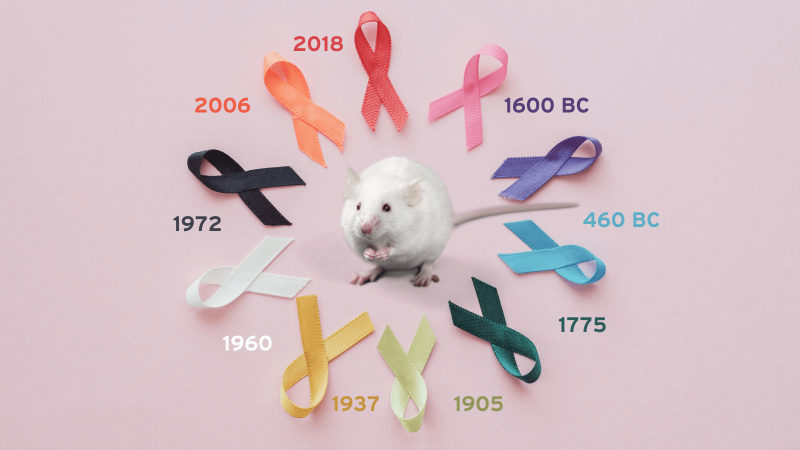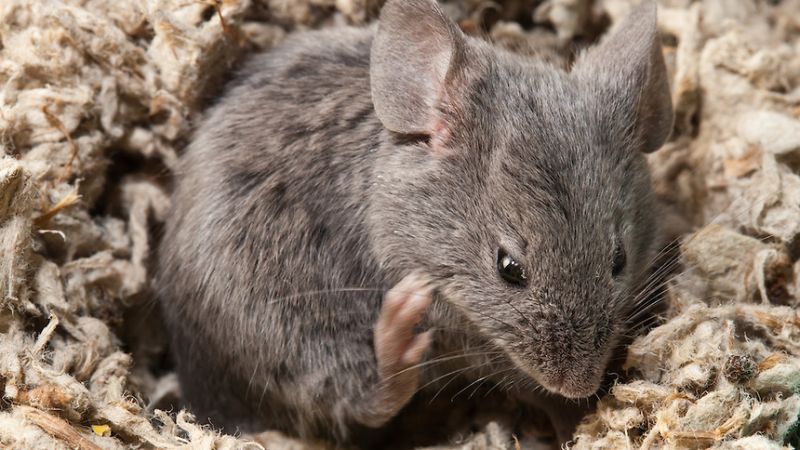
Professor Michelle Monje (USA) and Frank Winkler (Germany) were recently awarded The 2025 Brain Prize – the world’s biggest award celebrating contributions to neuroscience – for pioneering the field of cancer neuroscience. Using animal models at every step of the way, they transformed our understanding of the biology of neurological cancers, most notably gliomas.
Gliomas are types of cancers that arise in the brain. They are the most common primary brain tumours, accounting for about 30% of all brain and central nervous system tumours and 80% of malignant primary brain tumours. Unfortunately, they are extraordinarily difficult to treat. They are the leading cause of brain tumour-related deaths in both children and adults, and there is currently no cure.
This year’s Brain Prize winners made ground-breaking discoveries that have helped us to better understand these cancers and lay the ground for potential – and much needed – treatments. They showed that everyday neural activity in the brain can promote cancer initiation, growth, and spread, as well as treatment resistance. Rather than existing as foreign entities in isolation, gliomas integrate into neural circuits and hijack fundamental neural mechanisms to drive their own progression.
These findings have not only transformed our understanding of glioma biology but have also revealed entirely new therapeutic approaches – ones that focus not only on targeting tumour cells directly but also on disrupting their integration into neural networks.
Hijacking neuronal signals
Prof Monje, neuroscientist and neurooncologist at Stanford University, spent years studying how neuronal activity regulates brain development and plasticity, particularly through its effects on glial cells, also known as the support cells of neurons.
Early in her career, she and her colleagues found in mice that as we learn new skills – whether it’s mastering another language or solving complex mathematical problems – glial cells are recruited to active brain regions. They help wrap neurons in a membrane called myelin which increases processing speed. This dynamic collaboration between neurons and glial cells helps refine brain function over time. However it can also get out of hand, giving rise to gliomas.
Prof Monje also found that stimulating neuronal activity in mice grafted with human gliomas directly promotes glioma proliferation. This was the first direct evidence that gliomas are not just influenced by their environment, they are fully part of the neural circuits. The mouse models helped show that gliomas exploit molecular signals released by neurons and normally involved in neuron-to-neuron communication. Blocking these signals in mouse brains significantly limited tumour growth, revealing a novel therapeutic target that led to clinical trials.
The interconnection runs deep
In parallel to these discoveries, Frank Winkler, a neurologist and neuro-oncologist at the German Cancer Research Centre (DKFZ) in Heidelberg was making pioneering discoveries of his own. Using advanced live imaging , his lab observed that glioblastoma cells do not behave as isolated groups of cells but rather form highly interconnected networks. Tumour cells shoot out thin projections that physically link glioma cells together to form cooperative, multicellular systems, sharing resources and communicating across the tumour mass. This helps gliomas evade therapy, as evidenced in mice implanted with patient tumours.
By developing a novel imaging tool that can detect glioma cell movement deep within the normal brains of live mice in real time, Winkler’s lab showed how glioblastoma cells and metastatic cells colonise the brain over time. He made it possible to track the fate of individual metastasising cancer cells in vivo in relation to blood vessels deep in the mouse brain over time periods of minutes up to months.
Further imaging and genomic studies in mice helped identify molecular drivers of cancer progression. These molecules tended to be associated with neuronal growth and plasticity but were repurposed by gliomas to reinforce their malignant connectivity.
Connecting with neurons
Monje and Winkler’s independent but converging research programs finally led to a ground-breaking discovery in 2019 that gliomas actually form functional links with neurons. Overturning the long-standing view that they are autonomous, the studies revealed gliomas to be electrically integrated into neural circuits in ways that profoundly enhance their growth and invasiveness.
Using in vivo optogenetics in mouse models, Monje and colleagues demonstrated that gliomas do not merely receive growth signals from neurons but also engage in direct electrochemical communication. Gliomas are also responsible for setting up positive feedback loops in which tumours not only respond to neural activity but actively enhance it to drive their own progression. Blocking these synaptic and electrical interactions – either genetically, pharmacologically, or by suppressing neuronal activity in mice – impaired tumour growth and extended survival in glioma-bearing mice.
Winkler and Thomas Kuner’s work provided the ultrastructural and electrophysiological evidence of these connections between neurons and glioma cells. Disrupting this communication reduced glioma invasiveness and slowed tumour progression. Not only did this confirm that that gliomas directly integrate into neural circuits, but the findings also provided evidence of a translatable therapeutic strategy.
The foundation of cancer neuroscience
Monje and Winkler’s remarkable research led to a paradigm shift in our understanding of brain tumours. They redefined the nature of gliomas, and their integration in –and exploitation of –the brain, opening entirely new possibilities for therapy. This conceptual breakthrough laid the foundations for an entirely new field of research called “Cancer Neuroscience”, incorporating neuroscience into cancer research. Both researchers established cancer neuroscience as a distinct and rapidly growing field, leading to a fundamental re-evaluation of how brain tumours are studied and treated.
Traditionally, cancer biology research has focused on tumour-intrinsic mechanisms such as genetic mutations, cell proliferation, and invasion, while neuroscience has sought to decode synaptic function, plasticity, and neural connectivity. Monje and Winkler brought these two fields together through their discoveries. In doing so, they introduced a new therapeutic dimension – one that targets the neural ecosystem infiltrating the tumour, rather than just the cancer cells themselves.
Today, cancer neuroscience has turned into one of the fastest-growing areas of cancer research.
Laying the groundwork for new important discoveries
Building on this foundation, Winkler’s lab went on to further understand and characterise glioma cell populations. They identified in mice a distinct glioblastoma cell population responsible for tumour invasion. These remained unconnected to the main tumour, adopting migration patterns, and leading to enhanced infiltration into the brain.
They also uncovered a small but functionally critical pacemaker-like glioma cell population. These periodic glioma cells act as key hubs within the glioma network and are responsible for orchestrating tumour-wide signalling. Disrupting their rhythmic activity in mice significantly reduced tumour viability, slowed tumour growth, and extended survival in animal models, meaning that tumour communication relies on just a few highly connected cells.
Monje and colleagues have found evidence that reinforces the concept that gliomas hijack fundamental mechanisms of neural adaptation to sustain their malignancy. They have since shown that neuronal signalling supporting brain plasticity involved in learning and memory formation can drive tumour formation in mice. Instead of supporting cognition, it pushes glioma growth. Blocking these signals in mice hinders tumour progression and extends survival in mouse models grafted with paediatric glioblastoma and DIPG (diffuse intrinsic pontine glioma).
Room for clinical innovations
Monje and Winkler’s discoveries have not only transformed our fundamental understanding of brain tumours but have also driven major clinical innovations. Their research has inspired a new class of therapies aimed at disrupting neuron–tumour interactions. For instance, a new therapeutic strategy was shown to be efficient in reducing optic pathway gliomas in mice.
Monje’s research has directly led to impressive clinical trials targeting DIPG, aggressive and universally fatal paediatric brain cancers, after positive studies in cell culture and mouse models. Winkler has pioneered clinical investigations of perampanel –initially developed for epilepsy –as a means of interfering with neuronto-glioma synaptic signalling. These therapeutic strategies represent a paradigm shift – moving beyond treatments that focus solely on tumour cells to approaches that disrupt the tumour’s ability to integrate into neural circuits.
Beyond the brain
The impact of Monje and Winkler’s work extends far beyond their own laboratories and even the brain. Their pioneering discoveries have reshaped not only brain tumour research but also the broader landscape of oncology, ushering in a new era where the nervous system is recognised as a critical player in tumour progression. Other researchers are now using their discoveries to investigate how neural circuits shape tumour progression across different organs. Growing evidence suggests that certain malignancies, including pancreatic and prostate cancers, are influenced by neural activity within their microenvironment.
Monje and Winkler’s research has reinforced a broader principle in oncology – that tumours do not simply grow autonomously within organs but instead exploit host tissue microenvironments and networks for their own benefit. Targeting neural–tumour interactions could become a core therapeutic strategy, expanding treatment paradigms beyond cell-intrinsic tumour biology to disrupt cancer’s ability to hijack host systems.
Awarding Michelle Monje and Frank Winkler the 2025 Brain Prize is a recognition of their role in the transformative shift in how cancer is understood and treated today. Their legacy will continue to shape the future of research and clinical care for years to come, ensuring that insights from cancer neuroscience can offer new hope for patients facing some of the most devastating cancers.
For more information : https://brainprize.org/files/media/document/Information%20Pack%202025.pdf#page=8
For more information on the animal research behind previous Brain Prizes: https://www.animalresearch.info/en/medical-advances/brain-prize/
Last edited: 6 May 2025 13:24



